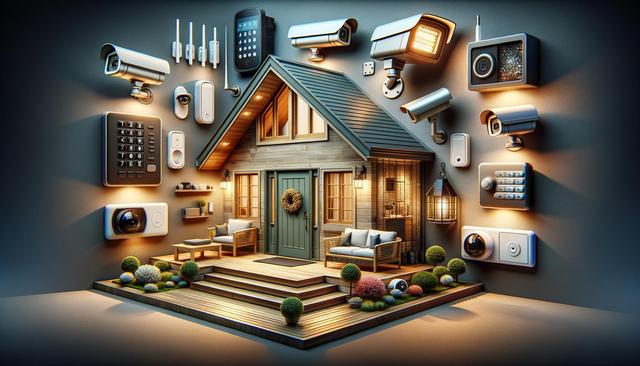
Protecting What Matters: A Guide to Home Security Systems
Understanding the Importance of Home Security
Home security systems offer peace of mind by helping to deter intrusions, detect unauthorized access, and provide alerts during emergencies. As concerns about residential safety continue to grow, more homeowners are investing in modern security solutions to enhance their personal protection. Whether you live in a bustling city or a quiet suburb, having a reliable security setup can make a significant difference in how safe you feel within your space.
Beyond just preventing break-ins, many systems also monitor for fire, carbon monoxide, and water leaks. This multi-layered approach adds a level of safety that extends far beyond basic intrusion detection. Furthermore, having these systems in place can often lead to lower home insurance premiums, as insurers recognize the reduced risk of damage or loss. Ultimately, home security is about prevention and preparedness—being equipped to respond effectively when something unexpected occurs.
Types of Home Security Systems
There are various types of home security systems available, each offering different features tailored to specific needs and preferences. Choosing the right one depends on factors such as the size of the property, location, and lifestyle habits of the residents. The most common systems include:
- Monitored security systems: These are connected to a central monitoring center that alerts authorities in case of an emergency.
- Unmonitored systems: These rely on loud alarms or notifications sent to your phone to let you take action.
- Wireless systems: Typically easier to install and move, these use Wi-Fi or cellular connections.
- Wired systems: Often more stable, these are suited for larger homes and are permanently installed.
Each type has its own advantages and limitations, so it’s essential to evaluate what features are necessary for your particular situation. While some homeowners may prefer a system that integrates with smart devices, others may prioritize 24/7 professional monitoring.
Key Features to Consider
When selecting a home security system, several features can enhance both functionality and convenience. The integration of modern technology has introduced a range of options that cater to a more connected lifestyle. Essential features to consider include:
- Motion detectors and entry sensors for windows and doors
- Security cameras with live streaming and recording capabilities
- Mobile app access for remote monitoring and control
- Smart home compatibility with devices such as locks, lights, and thermostats
- Environmental sensors for smoke, carbon monoxide, and water leaks
These components work together to create a comprehensive safety net around your home. It’s important to prioritize systems that offer reliable customer support and allow for easy upgrades or expansions as your needs evolve.
Installation and Maintenance
Installing a home security system can either be a do-it-yourself (DIY) project or require professional assistance. DIY setups are often favored for their affordability and simplicity, while professional installations may be better suited for more complex configurations. Regardless of the installation method, proper setup ensures that all sensors and devices are functioning as intended.
Ongoing maintenance is crucial for keeping your system effective. This includes tasks such as:
- Testing sensors and alarms regularly
- Replacing batteries in wireless devices
- Updating software or firmware for connected systems
- Reviewing video footage and clearing storage when needed
By staying proactive with maintenance, you can avoid false alarms and ensure your system remains operational when it’s needed most.
Smart Technology and the Future of Home Security
The integration of smart technology has transformed home security from static alarm systems into dynamic, interactive tools. Today, security systems often include artificial intelligence features that can distinguish between different types of motion, recognize faces, or even alert you when a package is delivered. These advancements not only improve security but also add convenience and personalization.
Voice control, geofencing, and automation are becoming standard features. For example, a system can automatically arm itself when you leave the house or disarm when you return. Furthermore, cloud-based storage and real-time alerts make it easier than ever to monitor your home from anywhere in the world.
As technology continues to evolve, so will the capabilities of home security systems. Staying informed about new developments ensures that your home remains protected using the most effective and current tools available.


